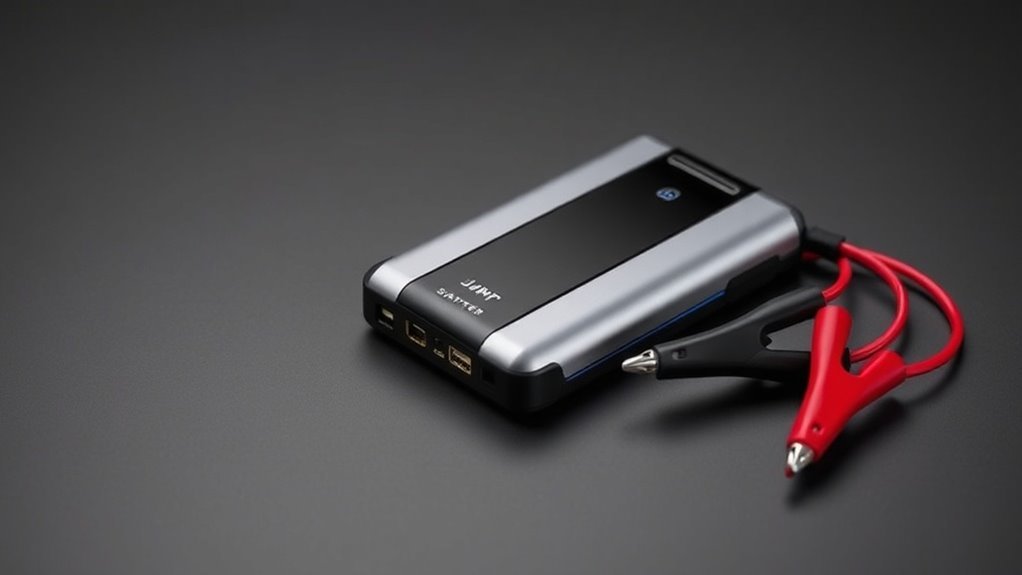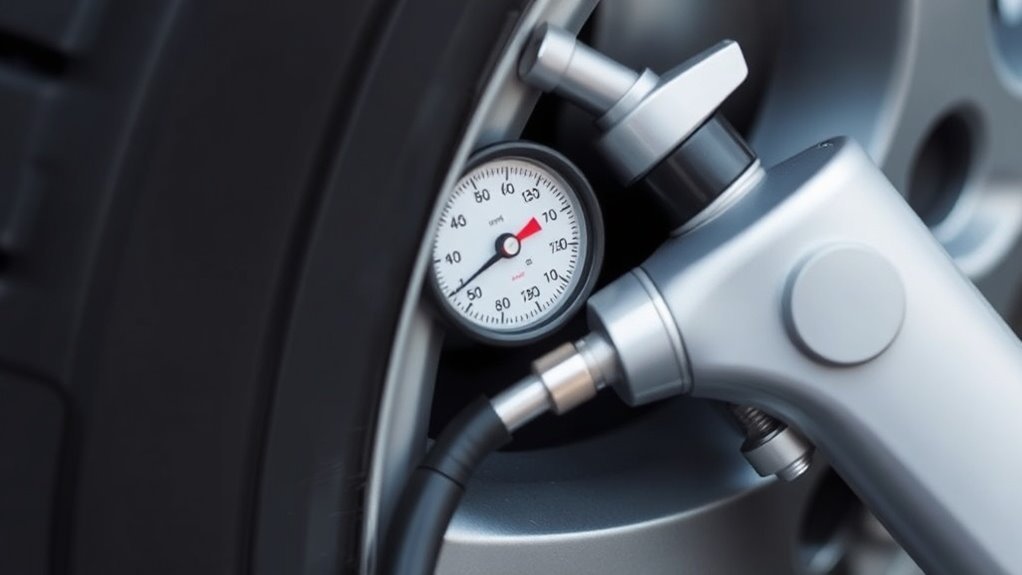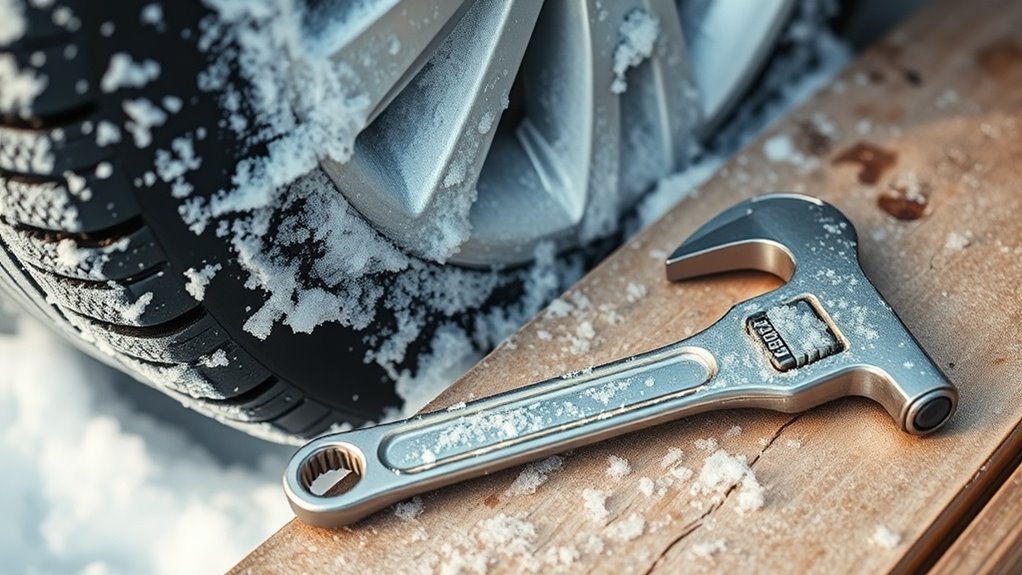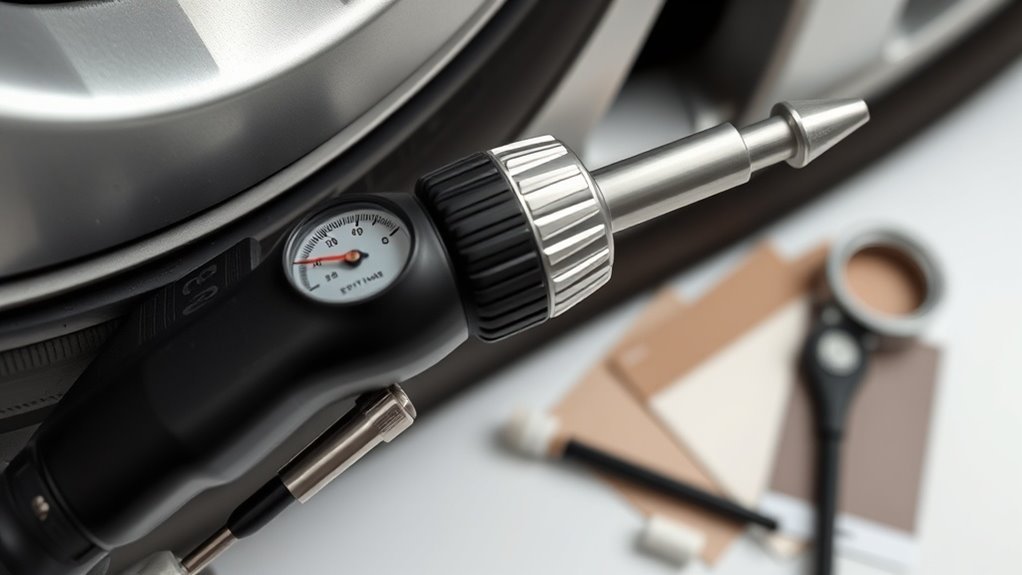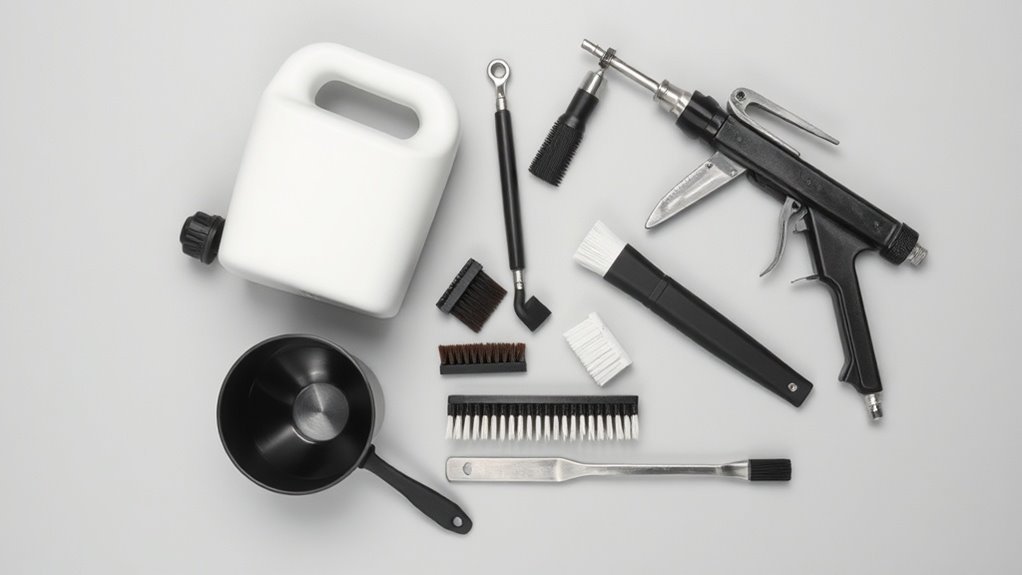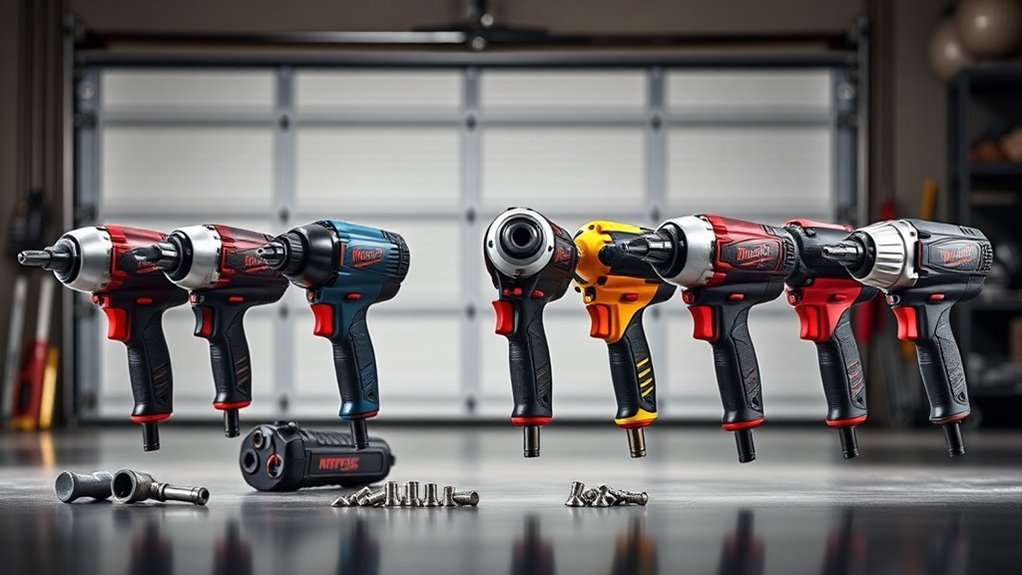How to Assemble a Basic Car Emergency Toolkit
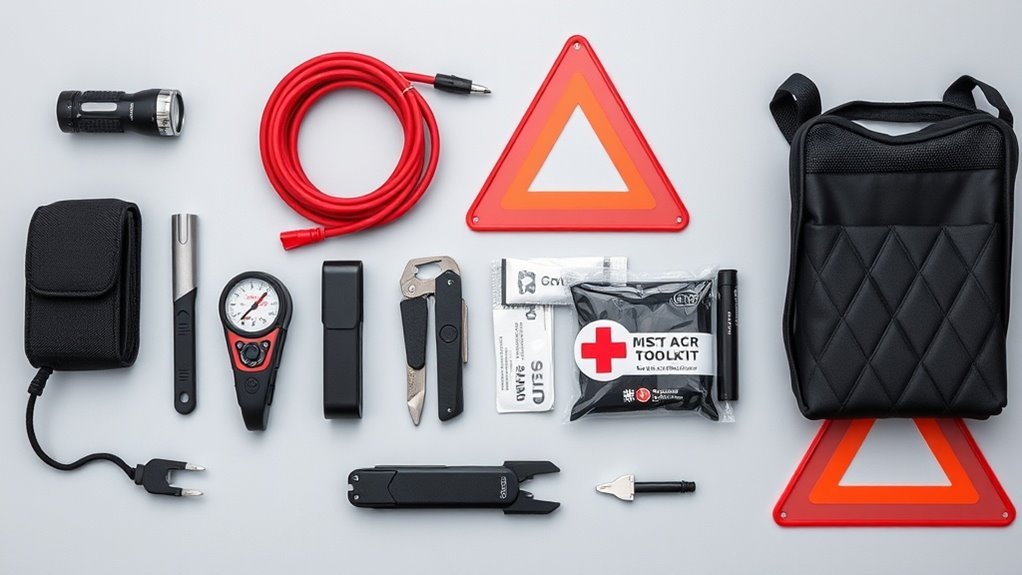
To assemble a basic car emergency toolkit, start with essential tools like a sturdy jack, lug wrench, and screwdrivers. Include safety equipment such as a first aid kit, reflective triangles, and a fire extinguisher. Don’t forget important fluids like coolant and engine oil. Enhance your kit with items for specific emergencies, like a tire inflator or pet supplies. Organizing and maintaining your toolkit is essential, so stay prepared for various situations that may arise on the road.
Key Takeaways
- Begin with essential tools like a jack, lug wrench, screwdrivers, pliers, and a tire pressure gauge for basic vehicle maintenance.
- Include safety items such as a first aid kit, reflective warning triangles, and a fire extinguisher to enhance roadside safety.
- Stock essential fluids, including coolant and engine oil, to address common vehicle issues and prevent breakdowns.
- Organize tools and safety equipment in a labeled container for easy access during emergencies.
- Regularly maintain the toolkit by reviewing contents, checking expiration dates, and updating items based on vehicle needs.
Importance of a Car Emergency Toolkit
While you mightn’t think you’ll ever need it, having a car emergency toolkit can be a lifesaver when you find yourself in unexpected situations.
Imagine hearing a strange noise, getting a flat tire, or facing severe weather while on the road. Without the right tools, these moments can become stressful and even dangerous.
A well-prepared toolkit gives you peace of mind, knowing you’re ready to tackle minor issues without relying on roadside assistance. It’s also a great way to save money in the long run, as tackling small repairs yourself prevents bigger problems from developing. Moreover, being equipped with basic hand tools allows you to perform essential maintenance tasks, ensuring your vehicle remains in top condition.
Basic Tools Every Toolkit Should Contain

As unexpected breakdowns can happen to anyone, having a set of basic tools in your car emergency toolkit is essential for addressing common issues.
First, make sure to include a sturdy jack and a lug wrench for changing flat tires. A set of screwdrivers—both Phillips and flathead—can help with various tasks.
Don’t forget a pair of pliers and a wrench set for any nuts or bolts that might need tightening or loosening. Also, keep a tire pressure gauge to monitor your tires’ health.
Duct tape and zip ties can be lifesavers for temporary fixes. Finally, having a flashlight will help you see what you’re doing, especially in low light situations.
These tools can make all the difference in a pinch. Additionally, including a portable jump starter in your toolkit ensures you are prepared for battery issues that may arise during emergencies.
Safety Equipment to Include
When it comes to safety on the road, having the right equipment can’t be overlooked.
Be sure to include a first aid kit, reflective warning triangles, and a fire extinguisher in your toolkit.
These items can make an essential difference in emergencies, keeping you and others safe. Additionally, consider having personal protective equipment available, as it can further enhance safety during roadside repairs or emergencies.
First Aid Kit
Including a well-stocked first aid kit in your car’s emergency toolkit can be a lifesaver during unexpected situations. Accidents can happen anytime, and having the right supplies on hand can make all the difference.
Here are some essential items you should include:
- Adhesive bandages in various sizes for minor cuts and scrapes
- Antiseptic wipes to clean wounds and prevent infection
- A pair of disposable gloves to maintain hygiene while aiding others
- A triangular bandage or gauze for immobilizing injuries or applying pressure
Reflective Warning Triangles
A well-stocked first aid kit is just one part of being prepared for roadside emergencies; reflective warning triangles are another essential component.
These triangles increase your visibility during a breakdown or emergency situation, letting other drivers know to exercise caution. Position them at least 50-100 feet behind your vehicle to provide adequate warning. They’re usually lightweight and foldable, making them easy to store in your trunk without taking up much space.
When purchasing, look for durable materials and bright colors to guarantee maximum visibility. Remember, in low-light conditions or inclement weather, these triangles can be lifesavers, so always keep them nearby on your road trips.
Being proactive with safety equipment like this can make all the difference.
Fire Extinguisher
Although you may not think about it often, having a fire extinguisher in your car is essential for safety during emergencies. A small blaze can escalate quickly, and having an extinguisher could save lives and property.
When choosing one, look for an ABC-rated extinguisher, which can handle various types of fires.
Consider these important points:
- Size: A compact model fits easily in your trunk or backseat.
- Visibility: Keep it in a spot that’s easy to access in case of an emergency.
- Inspection: Regularly check the pressure gauge and expiration date.
- Training: Familiarize yourself with how to use it before an emergency arises.
Having a fire extinguisher gives you peace of mind on the road!
Essential Fluids for Your Toolkit
When assembling your car emergency toolkit, it’s vital to include essential fluids like coolant and oil.
Understanding the different types of coolant and the specifications for your vehicle’s oil can make a big difference in a pinch. Additionally, including safety tools for battery maintenance can enhance the overall effectiveness of your toolkit when addressing battery-related issues.
Let’s look at what you need to keep your car running smoothly when trouble strikes.
Coolant Types and Uses
Understanding the different types of coolant is essential for keeping your car’s engine running smoothly, especially in emergency situations.
Coolant prevents overheating, protects engine components, and can help you avoid costly repairs. Here are the main types of coolant you might encounter:
- Ethylene Glycol: The most common type, offering freeze protection and corrosion resistance.
- Propylene Glycol: Less toxic and often used in family cars, but it may not provide as much freeze protection.
- Organic Acid Technology (OAT): Eco-friendly and designed for extended use, it’s perfect for modern engines.
- Hybrid Organic Acid Technology (HOAT): Combines the benefits of OAT and traditional coolants, providing excellent performance in various scenarios.
Keep these options in mind when assembling your toolkit!
Oil Specifications Explained
Every car owner should be aware of the various oil specifications that play a significant role in keeping their vehicle’s engine running efficiently.
Engine oil comes in different types, including conventional, synthetic, and synthetic blend, each with unique benefits. You’ll often see viscosity ratings like 5W-30, indicating how well the oil flows at different temperatures. The “W” stands for winter, meaning lower temperatures.
It’s essential to use the oil grade recommended in your owner’s manual, as using the wrong one can affect performance and damage the engine. Regular oil changes are also important; dirty oil can harm your vehicle.
Always keep a quart of the right oil in your toolkit, just in case you need to top it off or deal with a leak.
First Aid Kit Essentials
A well-stocked first aid kit is an essential component of your car emergency toolkit. You never know when you might need it, so make sure you’ve got the basics covered.
Here’s what to include:
- Adhesive bandages (various sizes) for cuts and scrapes.
- Antiseptic wipes to clean wounds and prevent infection.
- Gauze pads and medical tape for larger injuries.
- A pair of scissors for cutting tape or clothing.
These essentials will help you handle minor injuries on the spot.
It’s better to be prepared, ensuring you can address situations efficiently until professional help arrives.
Keep your kit in a convenient location, and make sure to check it regularly to restock items that may have been used.
Additional Items for Specific Emergencies
While a first aid kit is a great start, there are other items that can enhance your emergency toolkit tailored to specific situations.
A first aid kit is essential, but enhancing your emergency toolkit with tailored items is key for specific situations.
If you often travel in remote areas, consider adding a portable water filtration system to guarantee hydration. These systems ensure access to clean water that is crucial for survival during emergencies.
For winter driving, pack a blanket, hand warmers, and a small shovel to dig out if you get stuck.
If you’re prone to tire issues, a tire inflator and sealant can be lifesavers.
For roadside emergencies, a reflective warning triangle and a flashlight with extra batteries will increase visibility and safety.
Finally, if you’re traveling with pets, include a leash, portable food/water bowls, and an emergency pet first aid guide for their safety as well.
Recommendations for Organizing Your Toolkit
To guarantee your car emergency toolkit remains effective and accessible, it’s essential to organize the items strategically.
Start by categorizing the tools based on their function, which makes it easier to find what you need in a pinch.
Use a sturdy, clear container to keep everything visible and easy to reach. Here are a few tips for organizing your toolkit:
- Group similar items (like tools, first aid, and jumper cables) together.
- Label the sections to help you identify tools quickly.
- Keep frequently used items at the top for quicker access.
- Check your toolkit regularly to confirm everything’s in its designated spot. Additionally, consider implementing ergonomic principles to enhance accessibility and safety while using your toolkit.
Regular Maintenance and Updates for Your Toolkit
Keeping your car emergency toolkit in top shape means regularly checking and updating its contents. Start by scheduling a seasonal review—every few months isn’t too often.
Check expiration dates on items like flares, first aid supplies, and batteries; replace anything that’s past its prime. Make certain tools like wrenches and screwdrivers are in working order, and add any new gadgets that could be useful.
If you’ve recently changed cars or added new features, adjust the toolkit to meet your current needs. Remember to keep a checklist so you can easily spot any missing items.
Questions
How Often Should I Check My Emergency Toolkit?
You should check your emergency toolkit every six months, or whenever you go on a long trip. That way, you’ll guarantee all items are functional and replace any expired or damaged supplies as needed.
Can I Use Household Tools in My Car Toolkit?
Yes, you can use household tools in your car toolkit, but make sure they’re practical for automotive needs. Tools like screwdrivers and pliers are useful, but specialized items like wrenches or jump cables are essential too.
Are Pre-Packaged Kits Good Enough for Emergencies?
Pre-packaged kits can be useful for emergencies, but they often lack specific tools you might need. It’s best to customize your toolkit, ensuring it suits your needs and includes all necessary items for unexpected situations.
Is There a Specific Bag to Store Tools and Supplies?
You don’t need a specific bag, but a sturdy, waterproof backpack or tote works well. Just make sure it’s easy to access your tools and supplies during an emergency. Flexibility and organization are key!
What Should I Do if I Use an Item From the Toolkit?
If you’ve borrowed an item, think of it as a puzzle piece; just replace it as soon as you can. Keeping your toolkit complete guarantees you’re always prepared, so don’t let anything go missing for long.
Conclusion
Having a car emergency toolkit can mean the difference between facing a roadside crisis alone and maneuvering it with confidence. Picture yourself stuck on a desolate road with a flat tire, or cruising confidently knowing you’re prepared. The peace of mind from a well-stocked toolkit transforms anxiety into assurance. By assembling your own, you’re not just preparing for the worst; you’re ensuring that help is always within reach—ready to turn a potential disaster into a manageable challenge.

